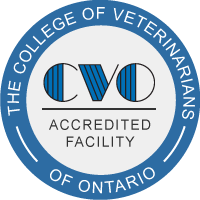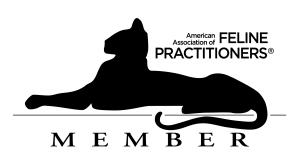Pet Nutrition Mini Series – Part 1
Understanding Pet Food Labels
Few topics elicit as much debate as pet nutrition. It is our hope that, through this series of e-mail newsletters, that we can help educate you about the issues surrounding what your pet should eat.
These newsletters will address such topics as reading pet food labels, what the ingredients list actually means and whether or not home made pet foods are a good option for your pet.
We trust that the information in this series of articles, though simplified, will help clarify queries you may have about pet foods and assist you in making sound, informed decisions regarding what you feed your pet. Perhaps they may even cause you to take a second look at the label on your pet’s can or bag of food. As always, we welcome any questions you have on this or any other topic.
Sincererly,
The Staff of the Queensway West Animal Hospital
The Pet Food Label
It is important when selecting a pet food that you have a basic understanding of what the wording on a pet food label means. Although manufacturers must abide by the law regarding what terms they use, they can be quite creative with them.
The three things on the label we will discuss are:
1) The Ingredient Listing – a list of ingredients that are in the food. We will discuss the actual definitions of these in a later newsletter.
The ingredients list shows what ingredients are actually in the food. They are listed in descending order based on their weight. This is an important concept because the list can be manipulated by using ‘heavier’ ingredients so they will show up earlier in the list. For example: Whole chicken versus chicken meal: They are both essentially the same thing, the only difference being water content.
- Whole chicken is 70% water and chicken meal is 10% water. If we wanted equivalent amounts of protein we would need to use more whole chicken, putting it higher on the list.
- Ingredients may be split into different forms – corn meal, ground corn and whole corn may be listed separately and therefore appear later in the list although they are all the same ingredient if taken together. This should not be taken as a criticism of corn though – more on that in the next newsletter.
The important message here is that one needs to be careful of the statement that one should look for chicken or beef or some other protein as the first ingredient – it isn’t as simple as that!
2) The Guaranteed Analysis
The guaranteed analysis provides consumers with information on the nutrients in a pet food. It will list the maximum or the minimum amount of a nutrient in the food. These are maximums and minimums so the actual content may be different. It does not indicate how available or digestable the nutrient is to your pet.
As an example, old boots could be used as a source of protein and motor oil as a source of fat. Both would give appropriate levels of protein and fat on the guaranteed analysis but neither could be used by your pet as a nutrient.
3) The Nutritional Adequacy Statement
The Association of American Feed Control Officials (AAFCO) is a government body that has developed nutrient profiles for pets of varying ages and stages of life. The nutritional adequacy statement is applied to a diet that has met these standards.
Foods may be adequate for the maintenance needs of adult pets or for growth and lactation. They can also be adequate for ‘all life stages.’ Since puppies/kittens and pregnant or lactating animals have the most energy and nutrient needs, ‘all life stage’ diets are essentially puppy or kitten foods. The all life stage diets likely contain nutrients in excess of what an adult pet would need.
There are no nutrient profiles for senior pets or for other specific purposes such as large breed dogs or breed specific diets…..as such, all these diets receive AAFCO certification for maintenance requirements only.


